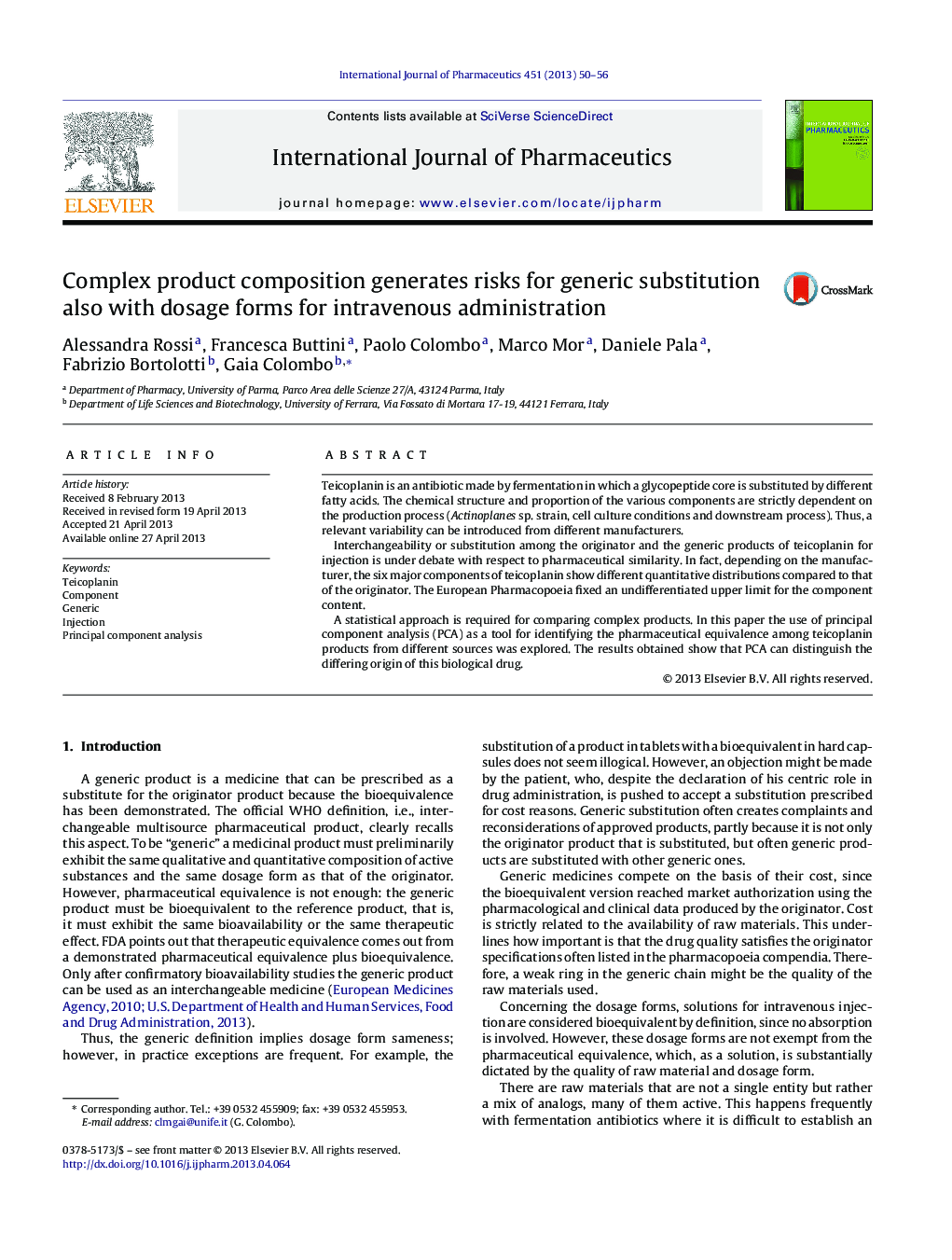| Article ID | Journal | Published Year | Pages | File Type |
|---|---|---|---|---|
| 2502247 | International Journal of Pharmaceutics | 2013 | 7 Pages |
Teicoplanin is an antibiotic made by fermentation in which a glycopeptide core is substituted by different fatty acids. The chemical structure and proportion of the various components are strictly dependent on the production process (Actinoplanes sp. strain, cell culture conditions and downstream process). Thus, a relevant variability can be introduced from different manufacturers.Interchangeability or substitution among the originator and the generic products of teicoplanin for injection is under debate with respect to pharmaceutical similarity. In fact, depending on the manufacturer, the six major components of teicoplanin show different quantitative distributions compared to that of the originator. The European Pharmacopoeia fixed an undifferentiated upper limit for the component content.A statistical approach is required for comparing complex products. In this paper the use of principal component analysis (PCA) as a tool for identifying the pharmaceutical equivalence among teicoplanin products from different sources was explored. The results obtained show that PCA can distinguish the differing origin of this biological drug.
Graphical abstractThe complex chemical structure of teicoplanin can lead to significant differences (*) between originator and generic composition, raising concerns for product substitution.Figure optionsDownload full-size imageDownload high-quality image (131 K)Download as PowerPoint slide
